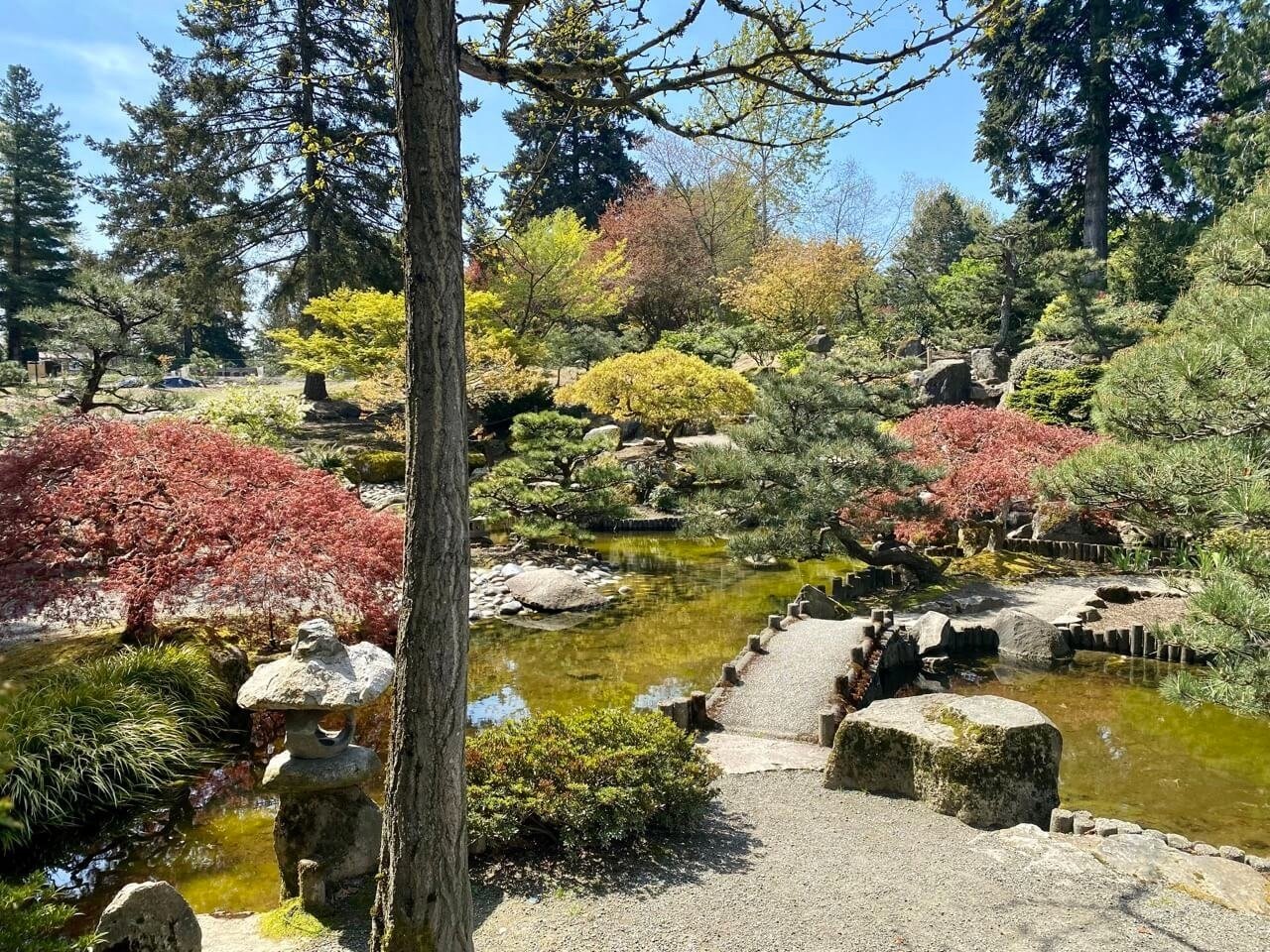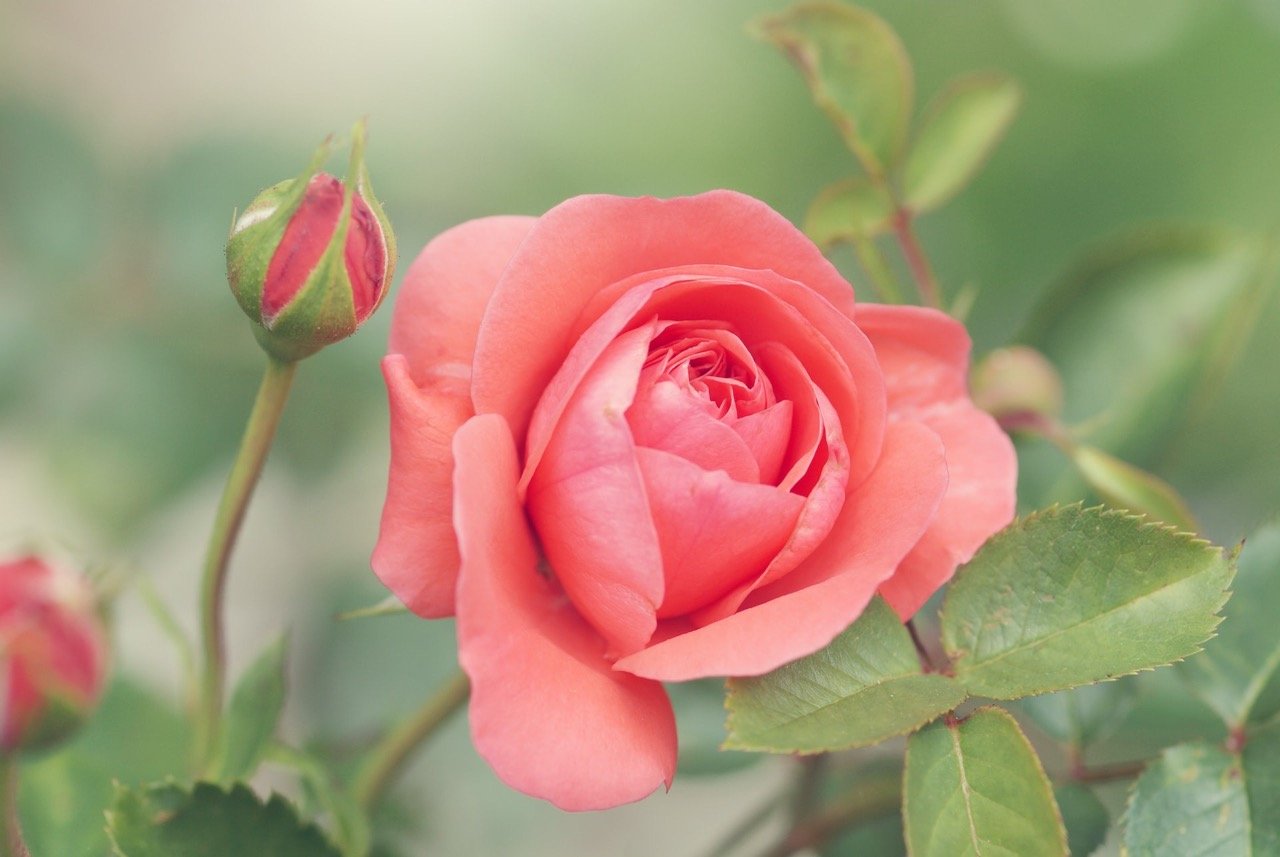The Highline SeaTac Botanical Garden: Seattle's Most Treasured Plants, Just Minutes from the Airport!
The Highline SeaTac Botanical Garden, is an 11 acre community botanical garden located right near Seattle-Tacoma International Airport (SEA) that somehow feels world’s away from the hustle and bustle of an airport. Take a moment to come and set eyes on an iris, daylily, rose, fuchsia, or even the spectacular Japanese garden.
The Seike Japanese Garden.
In the early 1990s, a small but beautiful garden was started by two Seattle residents, Elda and Ray Behm. It was about an acre in size, and what they started had quickly gained a reputation as one of the area’s most treasured gardens, largely because it was a showcase of what could be grown in the area. It was, in a sense, a powerful and colourful display of what could happen when local seeds and local soil collided.
Their property was slated for demolition in the mid-1990s in order to make room for Seattle-Tacoma International Airport’s proposed third runway. The community, as you might imagine, was up in arms, and in 1999, an agreement was reached to relocate their existing plantings onto a section of vacant land which was adjacent to the North SeaTac Community Center.
Over 200 volunteers moved almost the entirety of their garden (most estimates say 90% was saved and transplanted), and the first two acres of the Highline SeaTac Botanical Garden was born.
A Bit More About the Highline SeaTac Botanical Garden
Nowadays, the garden has about 11 acres to its name, and I was fortunate enough to get to explore it on my last trip to Seattle and the surrounding area. For those looking to visit, you’ll be happy to know that it’s free for all visitors, and open from dawn to dusk everyday (and that includes holidays, too!).
In terms of accessibility, the Highline Garden notes that “The Elda Behm Paradise Garden, Rose Garden and Species Gardens are ADA accessible. Seike Japanese Garden is situated on a hill with a switchback path, stone steps, and bridges. A gently sloping path leads to the base of the garden for viewing.”
They try to showcase what’s in bloom on their Instagram page, which I’ve found fun to follow. I enjoyed a recent post which summed things up rather well when they posted that folks could “come by before (or after!) a flight or while you’re waiting to pick someone up at the airport. Walking around the garden is WAY better than sitting in the cell phone lot, right? And we’re located less than 10 minutes from Arrivals at SeaTac Airport.”
Which Gardens Should You Prioritize?
Consider visiting at different times, depending on what’s in bloom. This is a place that can be enjoyed again and again.
There’s value is simply walking around and seeing what catches your eye, but if you’re looking to make a bit of a game plan before your visit, I’ll break down the different areas that you’ll want to visit. That being said, if you do have time to spare, I would recommend wandering a bit, and taking in some of the more ornamental features like the fountain, some of the seemingly Greek inspired pillars, and lovely covered walkways.
The Seike Japanese Garden
I personally went with the approach of just exploring and seeing what I happened upon, but when I came across the Seike Japanese Garden, I called out to a few fellow creators that I fortunate enough to be exploring the region with, and kindly noted that they needed to come now.
It’s located in the easter section of the property, and it’s a “pond-and-mountain” style garden. I was enamoured with the 1500 square foot pond, and the bridges that led across it. Keep your eyes out for the Japanese maple tree that is now over 100 hundred years old!
Interestingly enough, this garden also had a previous location in the city of SeaTac and it too was in danger of being overrun by the expansion of the SeaTac Airport. The project that moved forward to save the garden and place it here is widely considered to be the largest relocation of a Japanese Garden ever completed in the United States.
If you have the time, I’d recommend reading the story of the Seike family, whom this garden is named after.
Elda Behm’s Paradise Garden
This is where you’ll find the bulk of what was transported from Elda and Ray Behm’s stunning garden. The “must-see” part of this garden is undeniably her famous black trilliums, but the perennials always seem to be a hit as well.
The best approach here is likely just to follow the path that winds through the garden, and take a moment to appreciate things as you come across them. I personally was a fan of the sound of flowing streams, which was intriguing because I thought I might be hearing airplanes overhead due to the proximity to the airport, but that certainly wasn’t the case. It felt world’s away, in fact.
The Seattle Rose Society Celebration Garden
I’m never upset to see that a botanical garden has a thriving rose garden!
The Seattle Rose Society began tending this garden almost twenty years ago now, and you can typically find roses in bloom in this garden between May and November.
The Seattle Rose Society, interestingly enough, was founded all the way back in 1913, and they’re non-profit that has forged a small but mighty community that’s focused on education, meetups, and support. They even run a monthly newsletter, and if you’re interested in any of that, their website has all the info you need.
The Puget Sound Fuchsia Society Garden
Fun fact - the Puget Sound Fuchsia Society was founded all the way back in 1946, and that makes it the oldest society of its kind in the Northwest!
The garden, as you might imagine, is filled to the brim with a beautiful variety of fuchsias. You’ll find an impressive array of both colours and shapes on display. In terms of the best timing for visiting, most people say that fuchsias are at their best between the late spring and the early fall, with the summer representing the time when they’ll be at full bloom.
The King County Iris Society Garden
This section of the Highline SeaTac Botanical Garden is all about showcasing irises that grow in the Seattle area. The King County Iris Society (KCIS) wants people to recognize how irises can be used to “enhance any landscape,” and this garden certainly accomplishes that.
This garden tends to be in peak bloom between late April on through to June.
The Puget Sound Daylily Club Garden
This garden is planted with one goal in mind - to show a little more love to the lily. You’ll find lilies of various forms, heights, and colours. One thing the garden also tries to communicate is just how easy it is to take care of lilies (something that matters a fair bit to yours truly when tending to plants!)
As far as when to visit, the garden should be at its best between the middle of June until the end of July.
The Western Fuschia Species Society Garden
Western Fuchsia are actually not native to this area (they’re native to Mexico, Central & South America, and New Zealand), but the purpose of this garden is to illustrate how these can grow almost anywhere. Hanging baskets of fuchsias aren’t uncommon around Seattle as well, and so this garden also attempts to showcase the ancestors of those hanging fuchsias.
Late summer is your best bet here in terms of viewing.
What’s on the Horizon for the Highline Botanical Garden?
The fountain and vined canopies near the entrance.
There’s still plenty of land to play with here, which means there’s no shortage of potential to make this place even bigger and better. In fact, there’s about 6 acres that are undeveloped as of yet.
There are many plans in consideration (or already in the works), but what is probably worth highlighting at this particular moment is the forthcoming Visitor Center and Event Meadow, the Lins’ Family Peony Garden, and the Restored Wetland and Boardwalk.
The idea, it seems, is to ensure that every visit is a little different, and that the Highline SeaTac Botanical Garden continues to, rather fittingly, bloom and blossom.
I want to humbly thank Seattle Southside for hosting me as media. All opinions are completely my own.
If you appreciated this article, you’ll love our newsletter, as well as our Facebook group! Feel free to join, all are welcome. If you’ve got any questions or comments, add them below, and I’ll be sure to get back to you.




